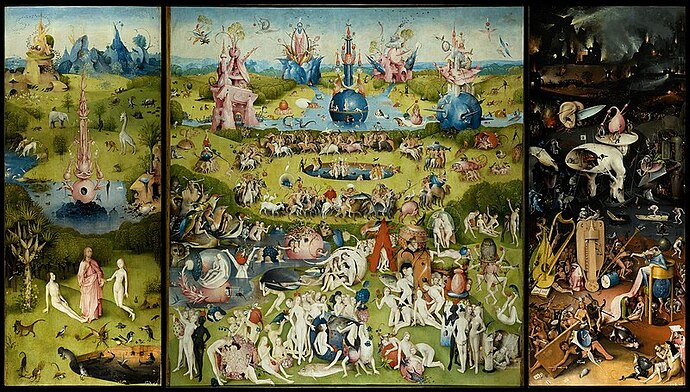Christianity was an ideology for the medieval period; it was specifically designed to work in that era. It is not just an ideology, it is also an aesthetic. Change the environment, and the aesthetic becomes absurd: Jesus doesn’t really work in the context of Walmart and McDonald’s. It’s too aesthetically random. The idea that Jesus could have an opinion about these things makes people skeptical. Jesus works in the context of feudalism and peasant imagination. When the biggest building you know of – one of the few you’ve ever seen – is a kaleidoscope of colored glass. In that period, Christianity was reality – it was not a “position” or “speculation.”
New Age religions were designed for the 20th Century. They were piggybacking off of futurism, social progressivism, humanism – and capitalist abundance. Observe how Scientology’s “space age” aesthetic is stuck in the 1940’s and 50’s. The E-meter and the Xenu tale are completely ridiculous in our current time period. But back in the 60’s it was hip and plausible.
Religions have to utilize aesthetics to make their visions come true. These aesthetics organize the environment into a coherent picture. This is to say that they will always degrade, because they are carefully constructed propaganda. They do not reflect reality, they narrativize it.
Ironically, most people do not require narratives to function as healthy human beings. If you notice, the secular bugmen Redditor types do in fact lead fulfilling lives. They get fulfilling careers, they get married, many do have children, and have fun stories to tell which they share on social media. Apolitical normies, on the whole, do pretty alright. And yet they are fairly ignorant and unopinionated about the whole process. They “aren’t sure” if life is a mechanical chaos of brute emnity on which they stupidly project their hopes and fears. They don’t really know or care.
But there is this sensitive group which has a very difficult time getting on. And in their minds, the normies require structure – derived from the outside; an exterior scaffolding – to live pleasantly, to self-actualize, to love life, and to dream. But this is projection: these are people who lack internal scaffolding. They cannot produce the confidence or positive feelings on their own. This group requires the coherent picture. They are the ones who pay into the system and give it life. They are the ones who actually bother to read the doctrine and live in a way that is consistent with its values. The “true believers,” the activists or volunteers.
The solution to existential issues is to develop internal scaffolding. Alcoholism, (clinical) narcissism, compulsive shopping, compulsive eating – all of these are forms of external scaffolding. Internal scaffolding means rational discussion of existence and living in a way that is natural. This is because existential dread is a technical problem. (See Weston A. Price, Nutrition & Physical Degeneration)

